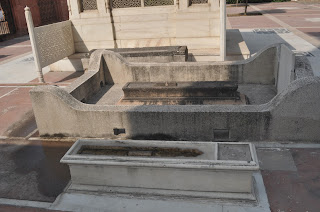It is one of the lesser known monument. This fort was built by Mohammed-Bin-Tughlaq. There is no proper way to enter the monument as such and the ASI board is there but there are no guards to protect the structure.
Some Interesting
Facts!!
1) When
I entered the fort I saw people playing cards, drinking and they were smoking.
Just after that I saw that a slum had developed inside the fort. On
my right side I saw so much garbage that I could not believe my eyes !!

2) The monument is in very bad condition. This is a only monument I recommend you don’t go to. I wrote this blog post to just show you how badly we need to do something very quickly.

3) This is referred to by historians as the fourth fort of Delhi and was built in the 14th century. Historians claim that this fort was used to protect the Jahanpanaha city during the Tughlaq dynasty.



.jpg)

















